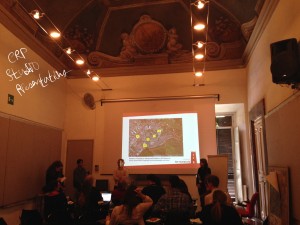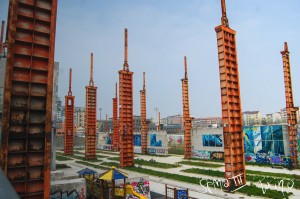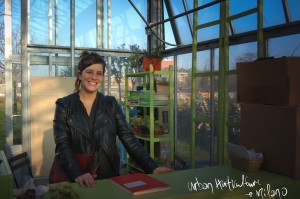This week, the hard work of my City and Regional Planning (CRP for short) colleagues is finally coming together. After surveying three neighborhoods outside of Rome’s city center for the past 2 and half months, we presented our findings in Palazzo Lazzaroni’s beautifully painted lecture hall.
The CRP urban design and analysis studio class here in Rome has allowed me to apply myself to my coursework in meaningful, Italian, ways. Such coursework indeed would not be possible to complete back in Ithaca, New York. So far, in our CRP studio, I have finally learnt how to draw and create street maps on In Design, and also how to approach complete strangers on the street and ask them questions regarding their neighborhood and to ask them to draw a mental map of their neighborhood on a piece of paper.
Not only has my CRP studio coursework been meaningful in ways of gaining new experience and skill sets, but also in ways of actually contributing back to human society by working towards creating a final neighborhood analysis booklet and set of posters for each of our respective neighborhoods, that each CRP group was assigned. Within the booklets and posters are neighborhood analyses of significant findings of the neighborhood that set it apart from the rest of Rome, in addition to creative design proposals to help improve the livability and overall image of the neighborhood. Our completed booklets along with a number of exhibits will be presented to the public and key stakeholders of our neighborhoods before the end of the semester.
Converted Industrial Space, Spina Tre-Torino
Were it not for the CRP design studio, I would not know what it is to explore the heart of Italian cities. As Italian film director Pasolini alludes to (particularly in his film Mamma Roma 1962), that the heart of the Italian city lies not in the city center, but rather in peripheral city neighborhoods, where real living occurs. Real living as the majority of urban dwellers don’t live in the city centers themselves.
Before coming to Italy, and before coming to Rome, I had never really imagined what anything outside the historic city centers of Italian cities would look like. With our CRP design studio, we have explored not only the peripheral neighborhoods of Rome, but also of Bologna, Turin, and Milan. Exploring the peripheral neighborhoods of each of these cities has provided us with the bigger picture of the Italian city, a greater understanding of the Italian city that truly differentiates a mere tourist from an academic.



